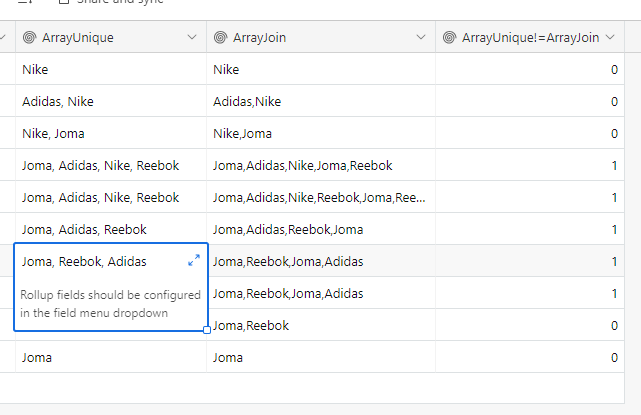Is it possible to identify if there are any duplicates in a lookup array?
I have 3 tables, all linked together:
- Entities (companies)
- Meetings
- Months
Every Meeting is linked to a month (for various uses) and to an Entity.
From the Entities table, I have data as such - the linked meetings and a lookup of their linked months.

What I'd like to do is identify if a month appears twice in any row.
I don't want to eliminate duplicates (i.e. ARRAYUNIQUE). Instead I need to see if 2 or more meetings occurred in the same month for any company.
Is there any way to do that?


